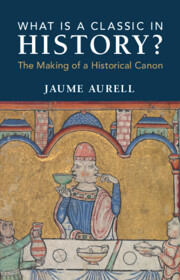Book contents
- What Is a Classic in History?
- What Is a Classic in History?
- Copyright page
- Contents
- Acknowledgements
- Introduction
- 1 The Conditions for Durability
- 2 The Dynamics of the Classic
- 3 The Inescapability of the Canon
- 4 The Canonical Function of Historical Genres
- 5 Genealogy as Double Agent
- Conclusions
- Selected Bibliography
- Index
Conclusions
Published online by Cambridge University Press: 15 February 2024
- What Is a Classic in History?
- What Is a Classic in History?
- Copyright page
- Contents
- Acknowledgements
- Introduction
- 1 The Conditions for Durability
- 2 The Dynamics of the Classic
- 3 The Inescapability of the Canon
- 4 The Canonical Function of Historical Genres
- 5 Genealogy as Double Agent
- Conclusions
- Selected Bibliography
- Index
Summary
Based on the inductive analysis of the previous chapters of the book, the conclusion provides closing remarks on the nature and meaning of the classic and the canon in history. I argue that the ability of some history classics to transcend time stems from their literariness, as it supports the text’s historicity, which include features shared with the classic in literature such as endurance, timelessness, universal meaningfulness, resistance to historical criticism, susceptibility to multiple interpretations, and ability to function as models. But I introduced other specificities of the historical operation such as the surplus of meaning, historical use of metaphors, effect of contemporaneity, and a certain appropriation of literariness without damaging the pastness of the past. I emphasize two conclusions. First, I hope to have contributed in some measure to demystifying the idea that ‘classic’ and ‘canon’ are two notions that imply normativity, rigidity, traditionalism, uncritical inertia, or cultural supremacism. Second, I hope that this research will contribute to consolidating the field of ‘historical criticism’, or ‘critical analysis of historical texts’, complementary to but distinct from the theory of history and the history of historiography, which has begun to flourish in historiography in recent decades.
Keywords
- Type
- Chapter
- Information
- What Is a Classic in History?The Making of a Historical Canon, pp. 300 - 313Publisher: Cambridge University PressPrint publication year: 2024



